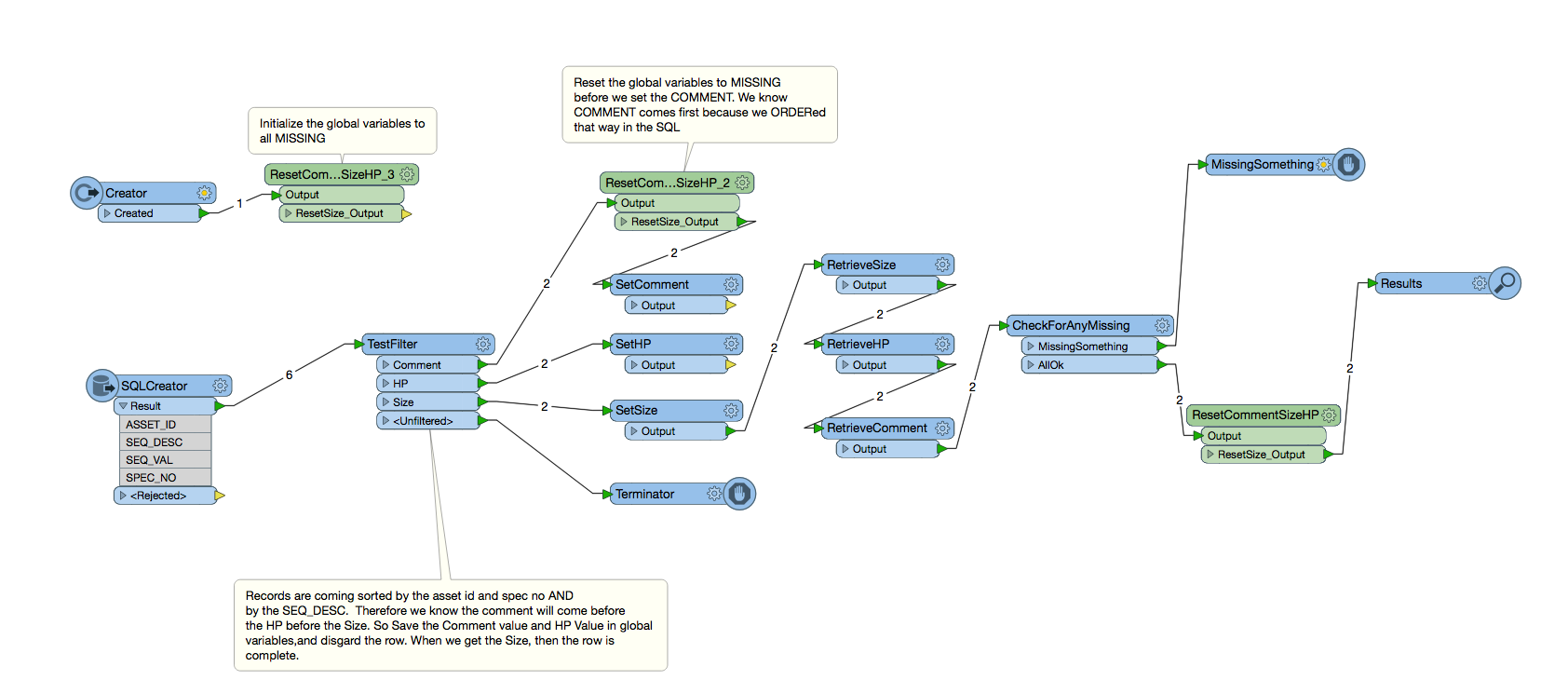Hi,
Please see below picture:

I have million of records in Table 1 and 2. want to merge to output format with related data based on some conditions. I tried with Tester, FeatureMerger, TestFilter etc, can any one suggest best approach?
 +3
+3Hi,
Please see below picture:

I have million of records in Table 1 and 2. want to merge to output format with related data based on some conditions. I tried with Tester, FeatureMerger, TestFilter etc, can any one suggest best approach?
Best answer by fmelizard
This was an interesting one. I think @takashi's solution with the inner joins is very interesting but if it had performance problems on the oracle side, then this solution within workbench would do the trick. Basically, if we get the rows sorted well, and we have a fixed set of things we're looking for (which you've confirmed -- we have 3 values for the SEQUENCE_DESC -- then a workspace like this can do the trick:

The key is to use Variables which maintain their value across rows. For quality purposes, set them up initially with known "unset" values. Then as you encounter each row, set the variable that will hold the value we want to accumulate. When we get the last row in a "set" of rows, retrieve back from those Variables, reset them, and output the aggregated/pivoted row.
Workspace and Sqlite sample data attached. Note I did not use exactly the same attribute names as the original, so you'd have to modify my SQL in the SQLCreator appropriately when you point it over ot Oracle.